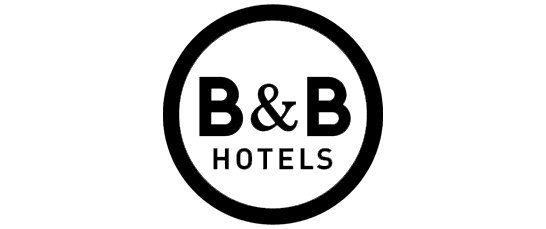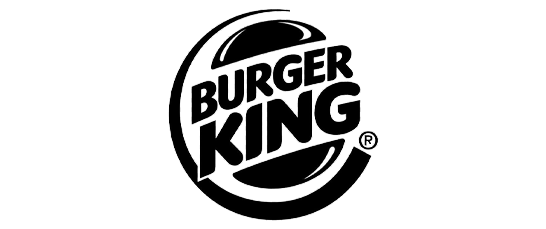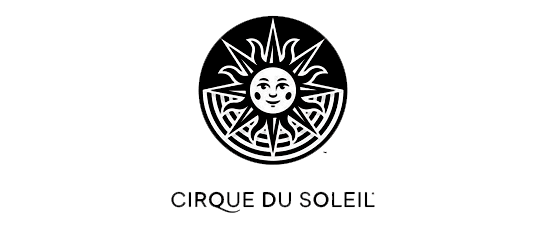Report social personalizzati in pochi minuti
Perché creare un report completo non dovrebbe mai richiedere più di 5 minuti.
No, non stiamo esagerando. Un report completo, su misura per il tuo cliente, con le metriche che contano e invii programmati. Te lo immagini? È il sogno di ogni Social Media Manager.
Spoiler: con Metricool è realtà.
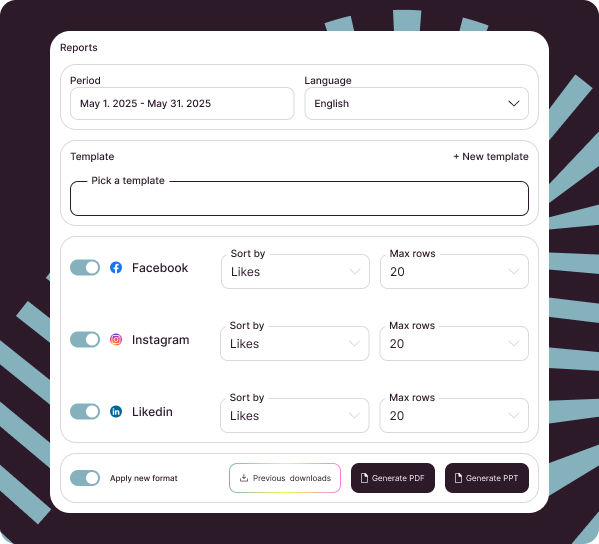
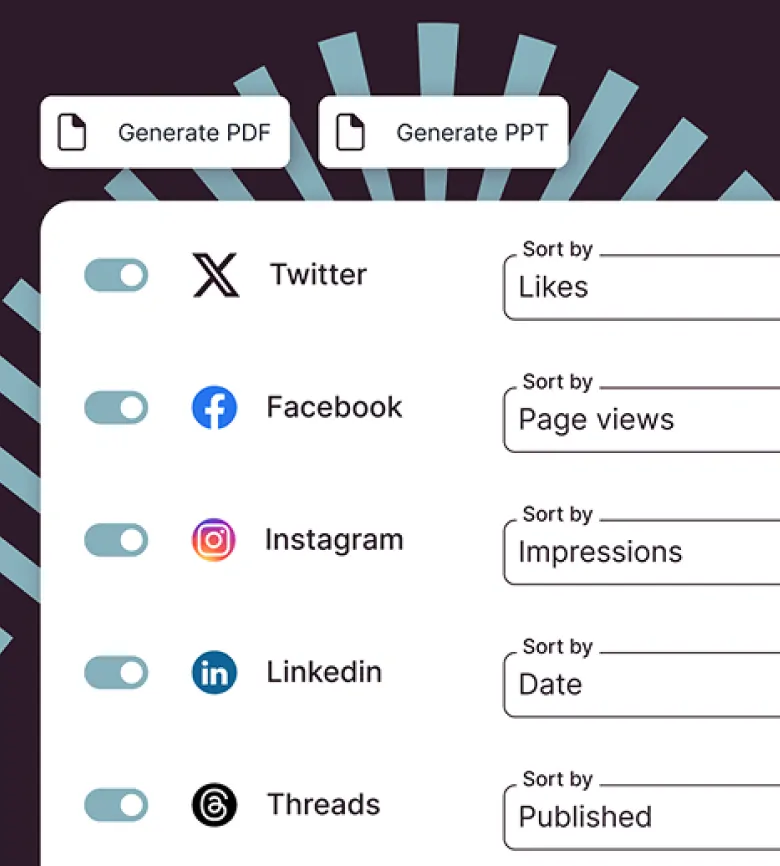
Crea report dettagliati per tutti questi social
Siamo uno strumento certificato
Addio al dramma dei report di fine mese
Ti suona familiare?
Caffè in mano, mille tab aperte, un Excel infinito… e appena finisci, un altro cliente ti chiede il suo report.
Stress puro, vero?
Ora immagina che tutto questo si faccia da solo. Senza ansia. Senza pasticci. Solo dati pronti a fare colpo.
Cliente soddisfatto. E tu finalmente respiri.
Report pronti in meno di 5 minuti
01
Crea un template che colpisce.Scegli i colori, aggiungi il logo del cliente, seleziona le metriche da includere.
Lo fai una volta, lo usi per sempre.02
Imposta periodo e lingua.Scegli il periodo da analizzare e la lingua del report. Tutto qui.
03
Scegli come gestire il report.PDF, PPT o invio automatico? Lo configuri una volta, poi te ne dimentichi.
04
È il momento del caffè.Il report è pronto. Ora sì, puoi passare ad altro.
Visto? Niente mal di testa. Provalo ora e dí addio allo stress dei report.


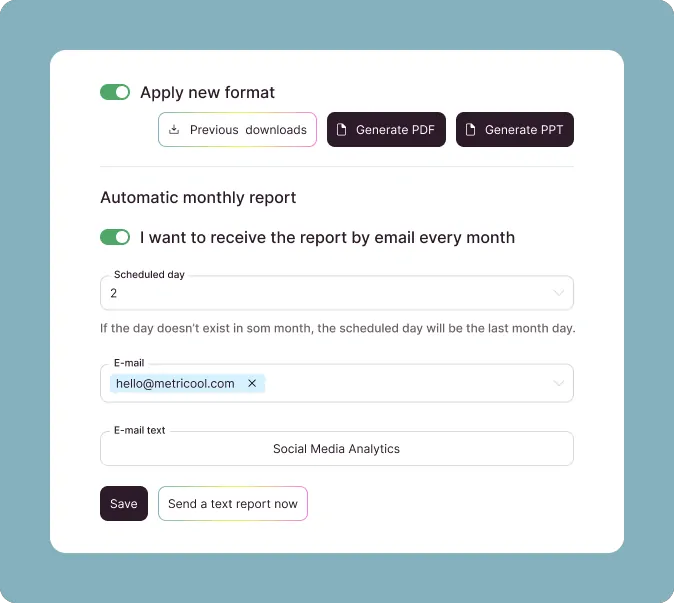
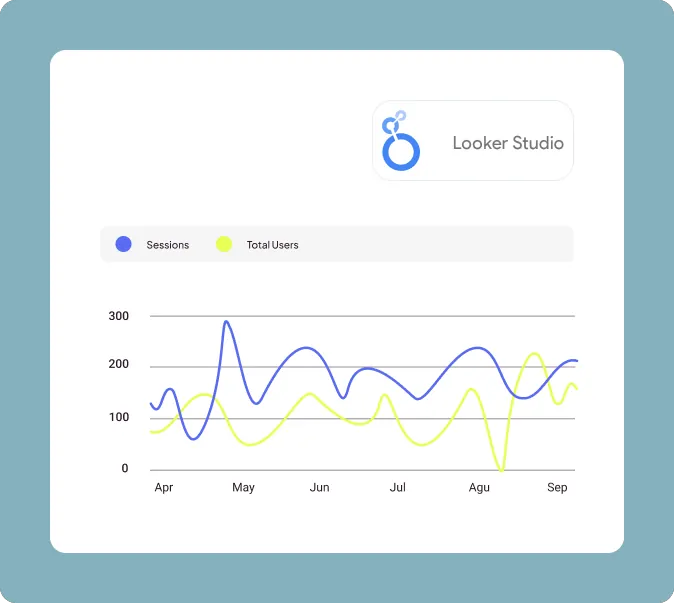
Più di un tool, un alleato
Oltre 3.5 milioni di professionisti, brand e agenzie si affidano già a Metricool.
E per chi ama i dati: Looker Studio
Collega i tuoi social a Looker Studio per creare report avanzati
Tu imposti le regole:
Crea dashboard interattive con zero fatica
Combina metriche social con altre fonti di dati
Personalizza i tuoi report con un design professionale
Scopri come Looker Studio può semplificarti la vita
Gratis. Senza complicazioni.
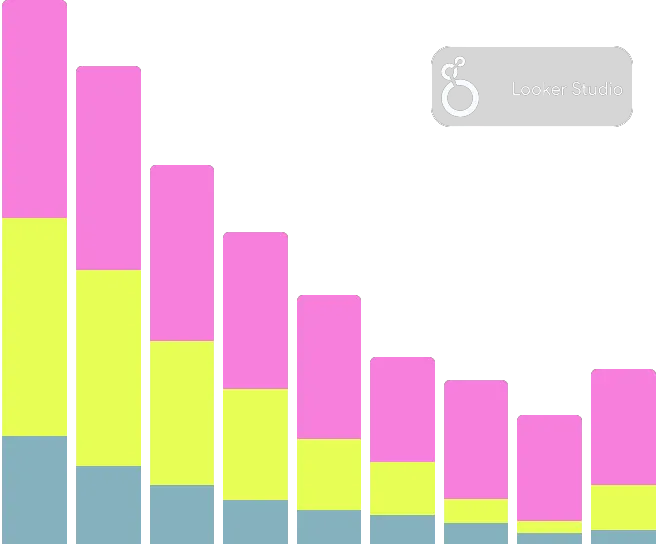
È il momento di semplificare la gestione social
Metricool è pensato per renderti tutto più semplice
Automatizza i tuoi report, risparmia tempo e rilassati (sì, te lo meriti).
Gratis. Senza complicazioni.
Unisciti a chi lo fa già e scopri quanto può essere semplice creare report.
Migliaia di professionisti già ne sono a conoscenza
E semplifica anche tu la tua vita con Metricool







